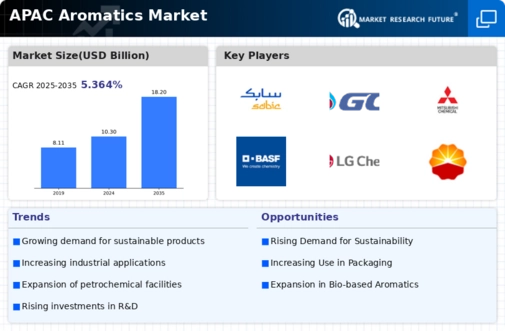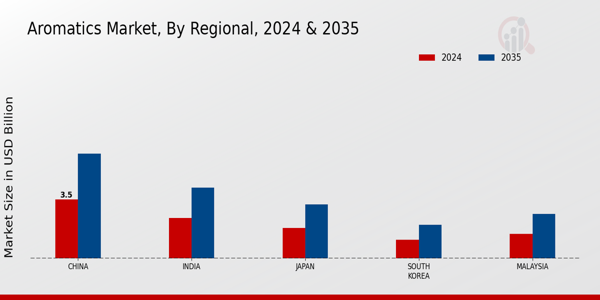The APAC Aromatics Market is characterized by a dynamic competitive landscape driven by increasing demand for petrochemical products, particularly in emerging economies across Asia-Pacific. Several factors contribute to the competitive environment, including technological advancements, the rising need for sustainable production, regulatory changes, and fluctuations in raw material prices.
Companies in this sector are engaged in strategic initiatives such as mergers and acquisitions, collaborations, and capacity expansions to strengthen their market position. The continuous innovation in product offerings, particularly in specialty chemicals and derivatives, plays a pivotal role in maintaining a competitive edge.
With the overall expansion of the textile, automotive, and packaging industries in the region, key players are focusing on optimizing their supply chains and enhancing operational efficiencies to meet growing consumer demands while adhering to environmental standards.
Focusing on SABIC within the APAC Aromatics Market, the company has established a significant presence through its extensive portfolio of high-performance aromatics. The strengths of SABIC lie in its advanced technological capabilities and a well-integrated supply chain that simplifies the distribution of its products across various sectors, such as plastics, electronics, and automotive.
SABIC's emphasis on innovation fuels its ability to respond swiftly to changing market trends and customer preferences. Furthermore, its commitment to sustainability indicates a strategic alignment with global environmental goals, making it a strong contender in the aromatics space in the APAC region.
Leveraging its operational synergies and economies of scale, SABIC positions itself as a reliable leader, continuously enhancing its offerings through research and development.
Honam Petrochemical emerges as another vital player in the APAC Aromatics Market, recognized for its robust manufacturing capabilities and extensive range of aromatic products, such as benzene, toluene, and xylene. The company’s strategic focus on high-value chemical derivatives provides it with a competitive advantage in responding to diverse customer requirements across various industries.
Honam Petrochemical maintains a steadfast market presence, bolstered by its ongoing investments in production facilities and sustainable practices. Mergers and acquisitions have further strengthened its competitive position, enabling access to new technologies and expanded market reach.
The company also invests significantly in research and development, ensuring a constant pipeline of innovation in its product offerings. Its strengths in operational efficiency and product quality reinforce its position as a leader in the APAC aromatics sector, responding effectively to the evolving demands of the regional market.



















